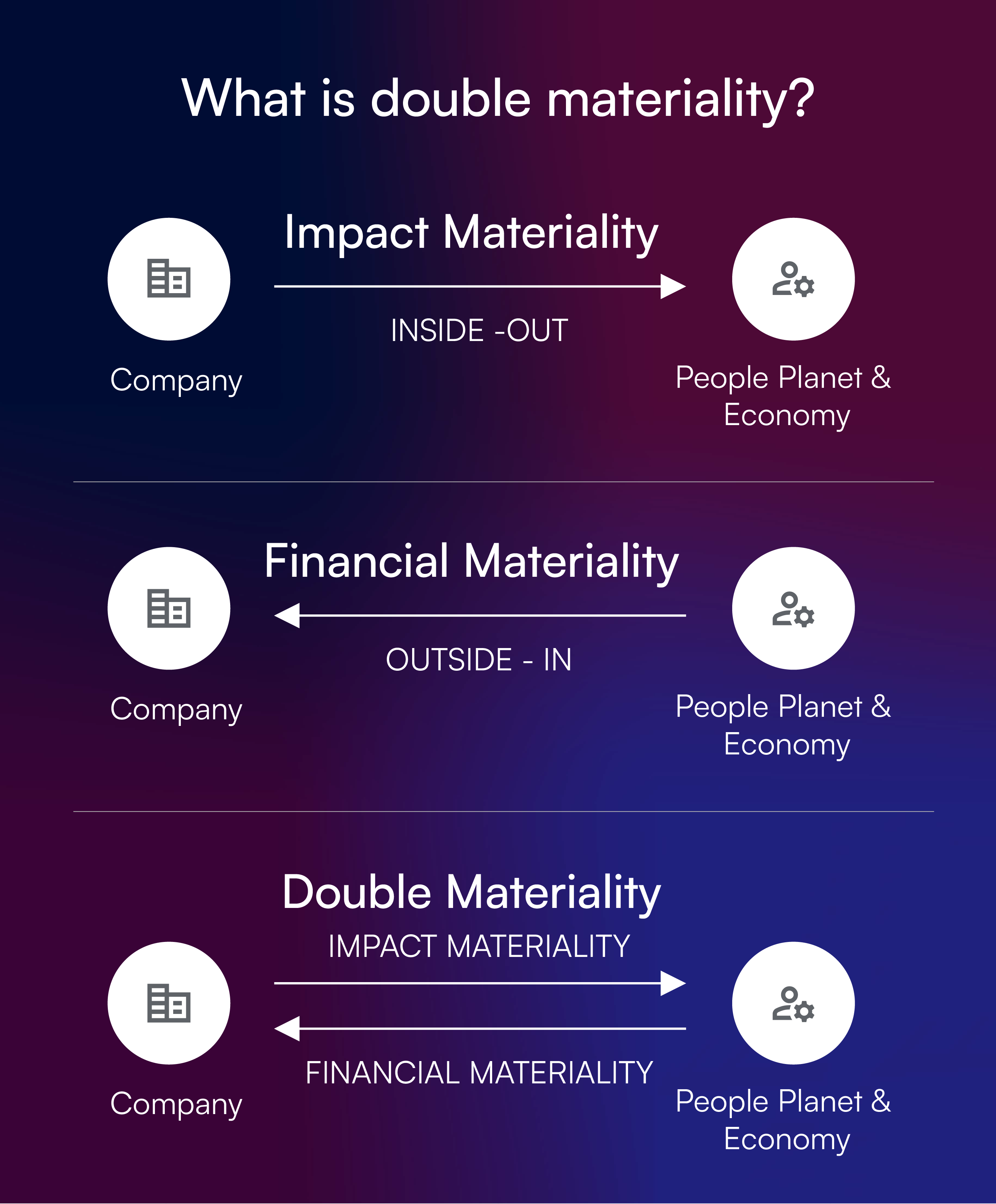With the emergence of regulations such as the EU Taxonomy, CSRD, and SFDR, the concept of impact materiality has proliferated in the market, marking an increased scrutiny on the comprehensiveness of ESG risk ratings. In this context, there has been increased interest in impact ratings leading investors to question, what really is the difference between ESG risk and ESG impact ratings?
Overview of Risk vs Impact

ESG risk ratings primarily assess how well a company manages its exposure to ESG-related risks that could potentially affect its financial performance. These ratings focus on the materiality of ESG factors to the specific industry and company, evaluating how effectively the organization mitigates these risks.
In contrast, ESG impact ratings measure the actual effect a company’s operations have on environmental and social outcomes, regardless of the financial implications for the company itself. These ratings attempt to quantify a company’s positive or negative contributions to issues such as climate change, biodiversity, human rights, or community development.
In terms used by global sustainability regulations, ESG risk ratings focus on financial materiality while impact ratings focus on impact materiality.
Read more: What Are Sovereign ESG Ratings?
Methodology of Risk Ratings vs Impact Ratings
The methodology of risk ratings and impact ratings also vary significantly, with risk ratings often collecting data from publicly available disclosures, while impact ratings focus primarily on uncovering the operational impact of companies across the value chain. In the table below we compare the scope and methodology of conventional risk ratings to Inrate’s impact ratings.

Implications for Investors
The distinction between ESG risk ratings and ESG impact ratings has significant implications for investors. Impact ratings, while focused on externalities, extensively uncover reputational and regulatory risks for companies in the current landscape. The shortening time frame within which these risk manifest into factors causing value erosion has put impact at the forefront of the minds of even the sceptics.
Risk Management vs. Impact Generation
Risk-focused investors:
Those prioritizing ESG risk ratings are typically more concerned with protecting their investments from potential ESG-related downside. They aim to identify companies that are less likely to face regulatory challenges, reputational damage, or operational disruptions due to poor ESG practices. This approach may be particularly relevant for institutional investors with fiduciary responsibilities or those with a lower risk tolerance.
Impact-oriented investors:
Investors emphasizing ESG impact ratings are often looking to generate positive social or environmental outcomes or minimise negative sustainability impact alongside financial returns. This approach aligns with the growing trend of impact investing and may appeal to investors who want their capital to drive positive change.
Short-term vs. Long-term Perspective
ESG risk ratings often provide insights into more immediate risks that could affect a company’s financial performance in the near to medium term. This can be valuable for investors with shorter investment horizons or those focused on quarterly or annual performance metrics.
ESG impact ratings may offer a longer-term view, as the positive impacts of sustainable practices and products can take time to materialize fully. Investors with a long-term outlook might find these ratings more relevant for identifying companies positioned to thrive in a future low-carbon, socially responsible economy.
Sector and Industry Considerations
The relevance of risk vs. impact ratings can vary significantly across different sectors. For example, in high-impact industries like energy or manufacturing, both types of ratings may be crucial. In contrast, for service-based industries, impact ratings might provide more differentiation between companies.
Investors should consider how these ratings apply to their specific investment strategies and adjust their analysis accordingly.
Holistic Analysis and Potential Trade-offs
Many sophisticated investors are increasingly using both risk and impact ratings to gain a more comprehensive view of a company’s ESG profile. This approach can reveal potential trade-offs between risk management and positive impact.
For instance, a renewable energy company might have a high positive impact rating but also face significant ESG risks due to supply chain issues or governance concerns. Conversely, a traditional oil company might excel at managing ESG risks but have a negative overall environmental impact.
Engagement and Stewardship Opportunities
Understanding both risk and impact ratings can inform investor engagement strategies. Investors can use this information to identify areas where companies can improve their ESG performance and engage with management to encourage positive changes.
For active investors, these ratings can guide proxy voting decisions and help prioritize which ESG issues to focus on in shareholder resolutions.
Portfolio Construction and Diversification
Investors can use insights from both risk and impact ratings to construct more balanced and diversified sustainable portfolios. This might involve selecting companies with strong risk management practices as a core holding, while allocating a portion of the portfolio to high-impact companies in emerging sustainable industries. A key factor in successfully integrating insights from different sources is ensuring that data providers offer full transparency, allowing data to be homogenized for method and context.
Read more: Regulatory Scenario for ESG Rating Providers
Regulatory and Reporting Considerations
As ESG reporting requirements evolve globally, investors may find that impact ratings align more closely with current regulatory frameworks focused on impact materiality. Emerging regulations around sustainability reporting and taxonomies are increasing the relevance of impact ratings in the future. Investors should stay informed about these regulatory developments and how they might affect the importance of different ESG metrics.


